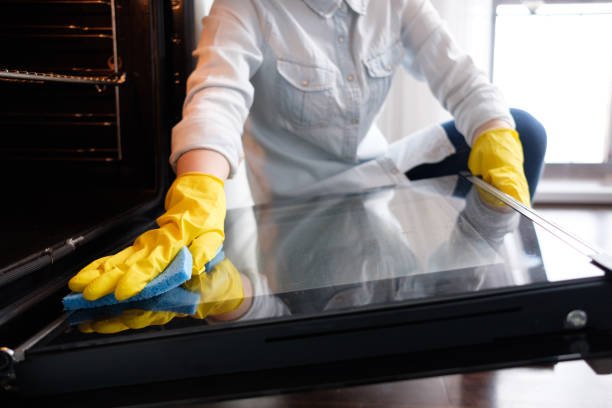Among the cooking utensils that have the unique capacity to transform into a crash site in the kitchen quickly is the oven. There is also the steak drip pan that has gathered in the bottom in a slimy puddle. These stray french fries fell through racks and have virtually gone to carbonaceous material, as well as the smooth layer of oil on the glass, which has kept you from seeing into the ovens for weeks. Need help figuring out where to start or how to maintain an oven? While it may seem intimidating, the payoff of a spotless oven and the guarantee of better-tasting dishes make the work worthwhile. Fortunately, oven cleaning isn’t as intimidating as you would imagine. Here’s all you need to understand about cleaning an oven, from a simple click to recipes that melt away fat.
How Frequently Should You Clean Your Oven?
Your oven should be cleaned at least once each 3 to 6 months, or even more frequently if necessary. Spot cleaning is also a good idea throughout the entire month. The cleansing gets simpler the more maintenance you give your oven. A cleaned oven makes the process more enjoyable and results in tastier meals and reduced germs.
How To Clean The Oven Interior?
Make Use Of The Self-Cleaning Feature
Several modern ovens have a self-cleaning option, even if it seems too fantastic. A convenient, time-saving function is a self-clean mode. The oven is preheated to roughly 880 degrees Fahrenheit throughout the cleaning operation. At this level, food within the oven burns up, leaving some ash residue. The remaining ash is readily removed with a moist towel.
If you do not wish to fiddle with commercial oven cleansers or perhaps even homemade cleaners, it’s also among the easiest methods for cleaning an oven. The main disadvantage would be that your oven stops working for between three and five hours and emits a significant amount of heat, which is unfavourable during the summer. You must keep animals and yourself away from the kitchen while it is being done because it may generate an undesirable stench.
A few self-cleaning oven recommendations should also be kept in mind. The enamel covering of a self-clean oven will be harmed if chemical oven cleaning or oven covers are used in or near any section of the oven.
Use Oven Cleaning That You May Buy
Although your oven’s self-clean mode does a decent job of eliminating baked-on fat and other filth, you have a few options. Spritz the inside of the oven uniformly with your preferred cleanser after clearing away any enormous chunks of scattered food, and then let it set for a minimum of thirty minutes. The cleanser removes the grease and dirt, making it simple to remove them. It’s best to wear mittens and a face shield while cleansing the oven since the toxins are robust. Therefore, ventilation should be left open.
Make Your Oven Clean
Sodium bicarbonate, vinegar, and water can make a homemade organic cleaner to cleanse your oven without using oven cleaners. Use a safe, obvious fix instead of a conventional oven cleaner for outstanding results. Sodium bicarbonate and water make an excellent DIY oven cleaning. The water dissolves baked-on grime and releases bits of food, while the bicarbonate powder is an exfoliant. For added thorough cleaning, you can add vinegar to the bicarbonate-of-soda combination. Spritz the vinegar on top, then wait 20 minutes for it to bubble and solidify. Next, brush all areas carefully using a non-abrasive sponge.
Conclusion
Oven cleaning might be difficult, but it has numerous advantages that make it worthwhile. The better flavour of meals prepared in a clean oven is a great motivation to clean the oven, as are lower energy costs. A spotless oven holds heat considerably more effectively and distributes it more uniformly. Food baked in a clean oven is delicious since it is prepared more uniformly.

